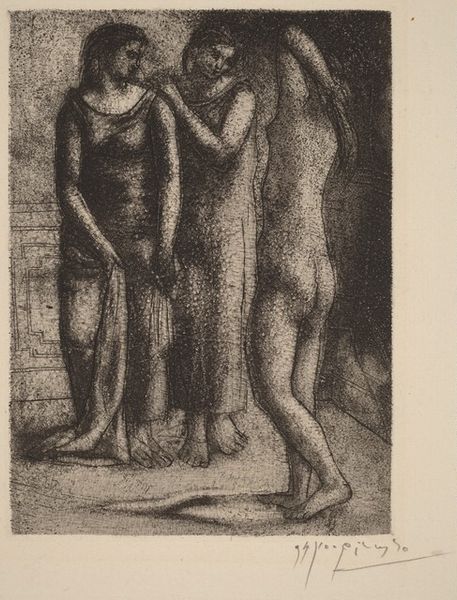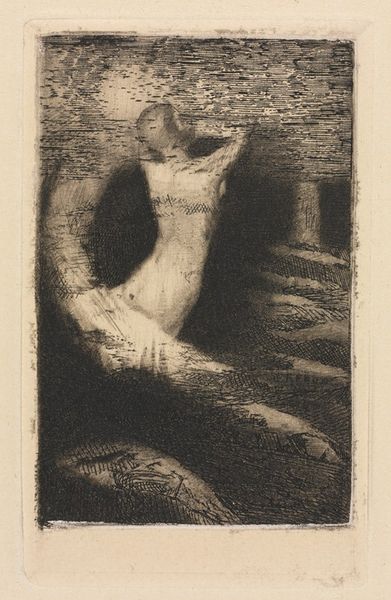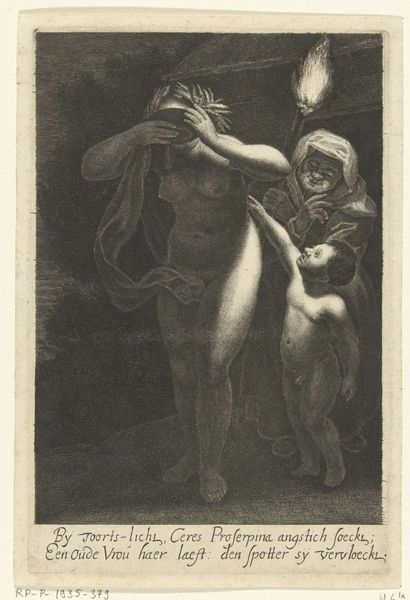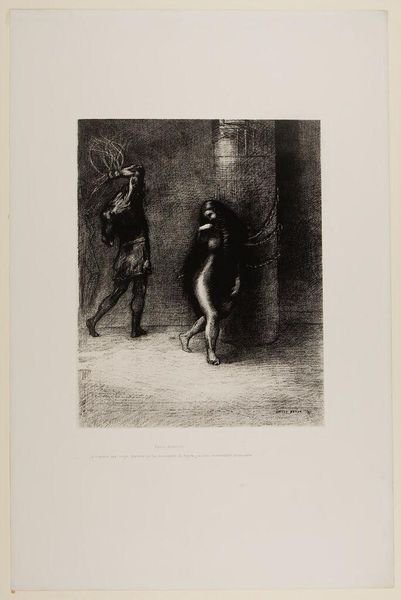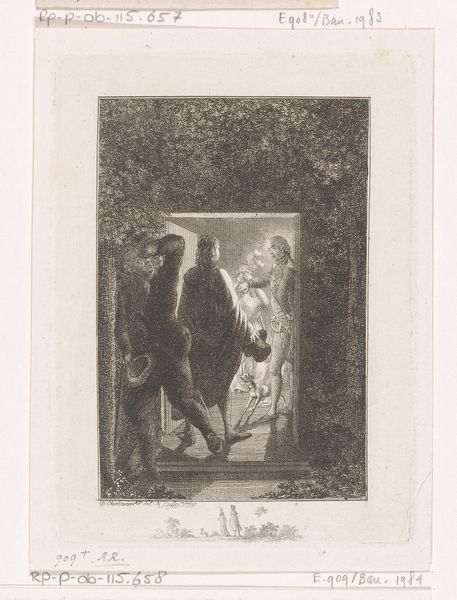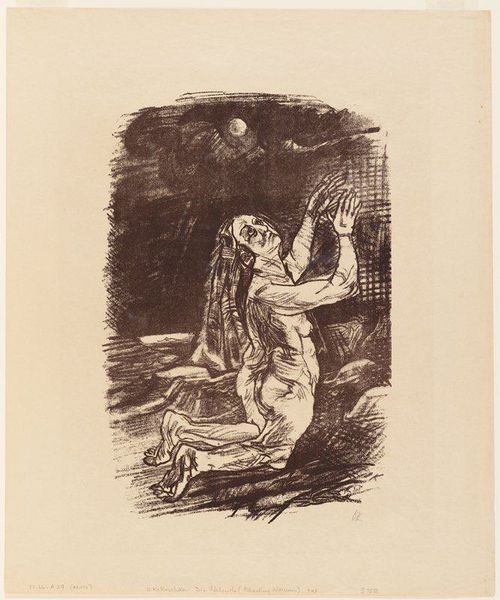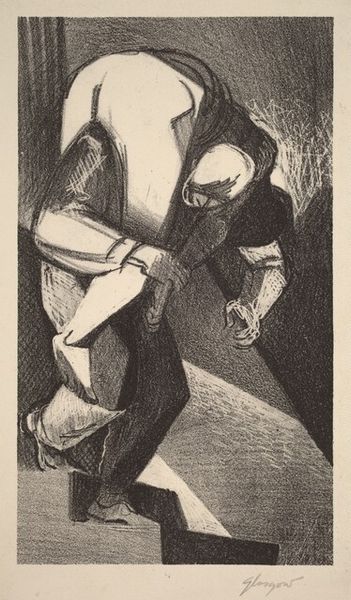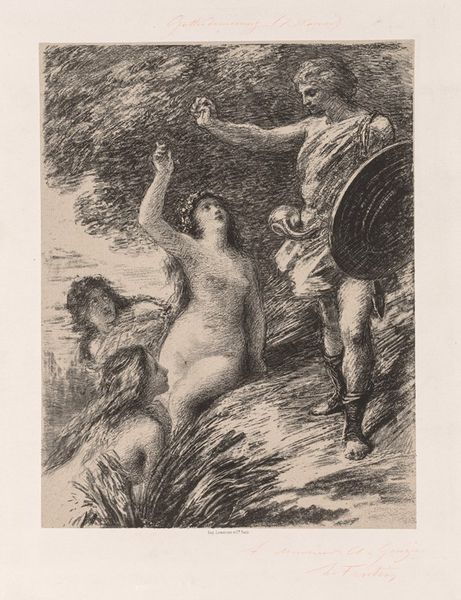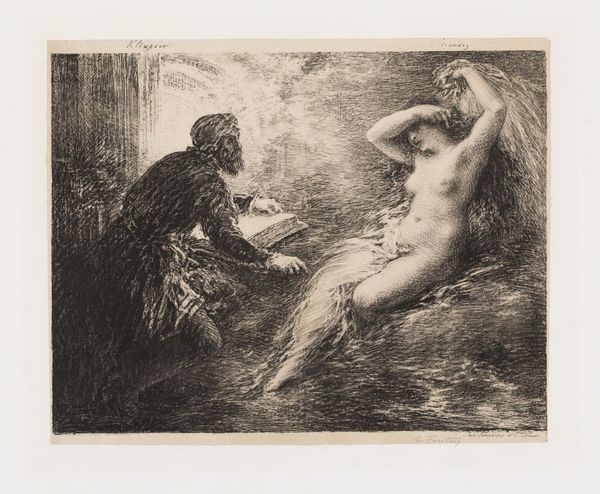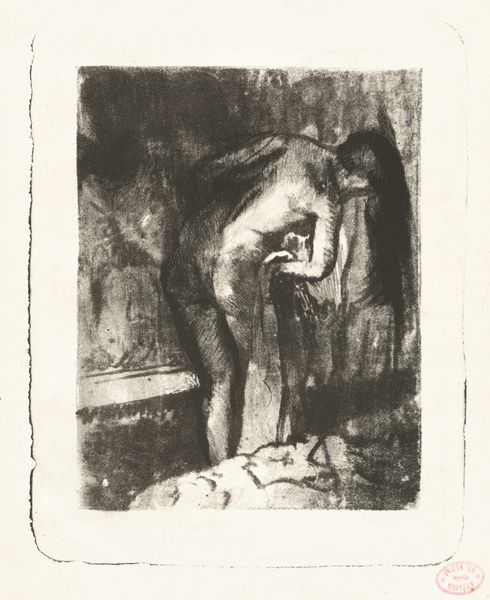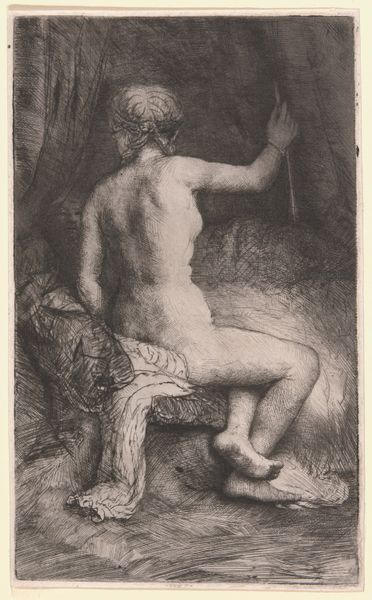
Saint-Antoine...A travers ses longs cheveux qui lui couvraient la figure, j'ai cru reconnaitre Ammonaria (Saint Anthony: "Beneathe her long hair , which covered her face, I thought I recognized Ammonaria) 1889
0:00
0:00
lithograph, print, etching
#
narrative-art
#
lithograph
# print
#
etching
#
figuration
#
symbolism
#
portrait drawing
Copyright: National Gallery of Art: CC0 1.0
Editor: Here we have Odilon Redon's "Saint Anthony: \"Beneath her long hair, which covered her face, I thought I recognized Ammonaria", a lithograph from 1889. I’m really struck by the textural contrast Redon achieves – the smoothness of the female figure juxtaposed with the rough, almost frantic scribbles surrounding the figures. What do you make of it? Curator: Let's consider the labor embedded within this lithograph. Redon meticulously transferred his image onto a stone, a process demanding immense skill and physical effort. How does the knowledge of this labor influence our perception of the image? Is there an apparent emotional impact derived from the intensity with which it was made? Editor: Well, I see that frantic quality adding to a feeling of unease or perhaps even delirium suggested by the image, as though Saint Anthony's mental state is reflected in Redon's labor. The reproductive nature of printmaking also makes me think about wider consumption patterns; were these images widely distributed, accessible to many, and does that alter its function? Curator: Exactly! The affordability of prints broadened access to art, impacting consumption. Consider the symbolic figure itself: a saint challenged by temptation. Redon's choices of using lithography to represent this scene are crucial, as it democratizes access to images of the saint and his trials, allowing for their wide dissemination among audiences. Editor: So, Redon is engaging in the popular market but doing so with his very personal, and perhaps, subversive, iconography? Curator: Precisely. He’s leveraging the means of production – lithography and printmaking – to engage with and subtly critique prevailing cultural narratives around religious figures, desire, and perhaps the relationship between high and low culture. Think, too, about the materiality of ink, the weight of the stone, the press involved - these are essential in reading how the imagery resonates. Editor: That's fascinating, I never thought about the physical process of printmaking contributing to its meaning in that way! Curator: Seeing the relationship between production and consumption can often reveal some powerful layers in art making.
Comments
No comments
Be the first to comment and join the conversation on the ultimate creative platform.
